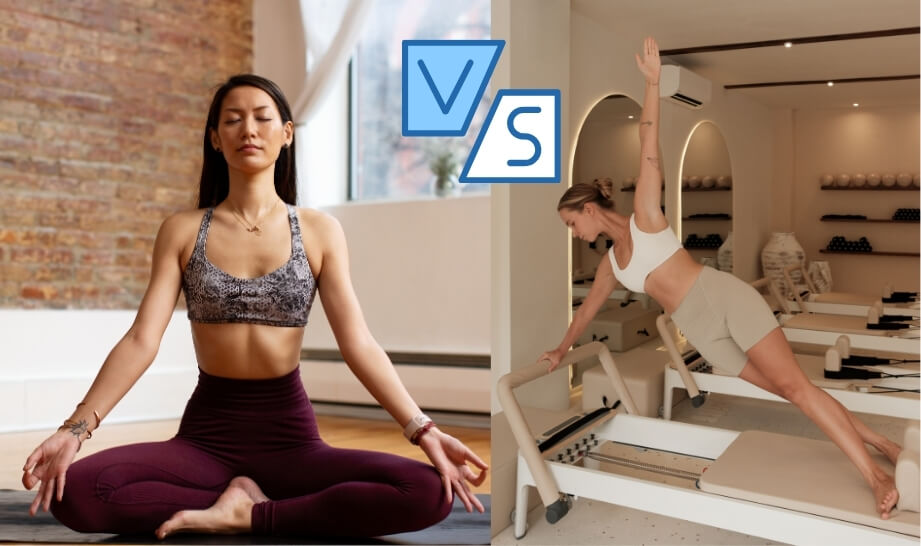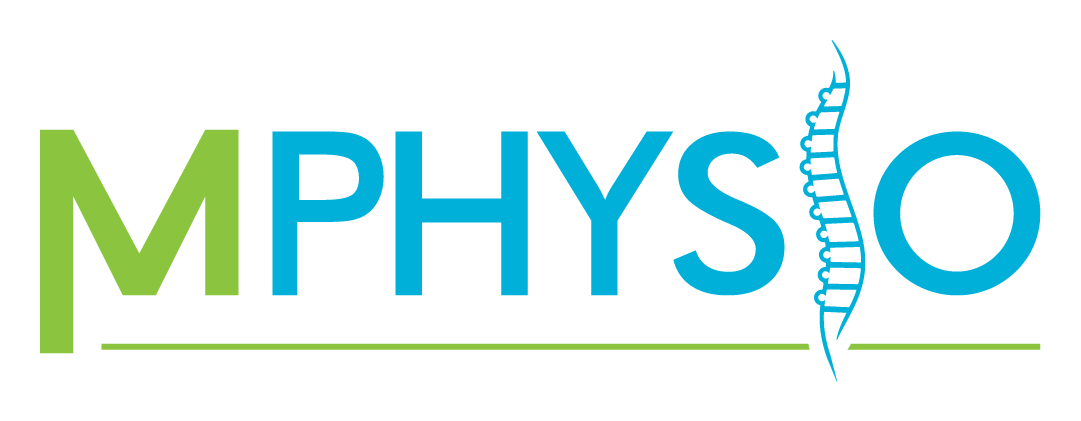Blog, Physiotherapy
Yoga vs. Pilates: Which is Better for Injury Prevention and Overall Health?

Pilates and yoga are two of the most popular low-impact exercise methods, each offering a range of benefits for flexibility, strength, and overall well-being.
While they share some similarities, their approach to movement and injury prevention differs.
Choosing between them depends on your individual needs, fitness level, and injury history—something that a physiotherapist can help assess.
In this blog, we’ll explore the differences between Pilates and yoga, their benefits, potential risks, and why consulting a physiotherapist is essential before starting either practice.
Pilates vs. Yoga: What’s the Difference?
While both Pilates and yoga focus on mind-body connection, breathwork, and controlled movements, they have different origins and purposes:
- Pilates was developed by Joseph Pilates in the early 20th century as a rehabilitative exercise system. It focuses on core strength, stability, and controlled movement patterns to improve posture and prevent injuries.
- Yoga has been practiced for thousands of years, originating in ancient India. It combines stretching, strength-building, breath control, and meditation to promote physical and mental well-being.
Key Differences:
| Feature | Pilates | Yoga |
| Focus | Core strength, stability, and controlled movement | Flexibility, balance, and mindfulness |
| Breathing | Lateral thoracic breathing (ribcage expansion) | Deep diaphragmatic breathing (inhale-exhale coordination) |
| Equipment | Mat exercises & specialised equipment (Reformer, Cadillac) | Primarily mat-based with props (blocks, straps, bolsters) |
| Movement | Precise, controlled movements with repetitions | Flowing, sustained poses with breath synchronisation |
| Mental Aspect | Focus on body mechanics and alignment | Emphasises relaxation, stress reduction, and mindfulness |
Benefits of Pilates and Yoga for Injury Prevention & Health
Both Pilates and yoga offer preventative and rehabilitative benefits, but their methods differ in how they protect and strengthen the body.
Pilates Benefits:
- Strengthens Core Muscles – Reduces strain on the spine and improves posture.
- Enhances Stability & Control – Prevents falls and joint instability.
- Improves Movement Efficiency – Ideal for rehabilitation after injuries.
- Builds Muscular Strength without Bulk – A great option for those needing balanced strength.
- Great for Lower Back Pain – Strengthens deep spinal stabilisers and reduces stress on the lower back.
How It Prevents Injuries: Pilates targets weak stabilising muscles, reducing overcompensation patterns that often lead to joint pain, lower back injuries, and muscle strains.
Yoga Benefits:
- Increases Flexibility & Mobility – Prevents muscle tightness and joint stiffness.
- Enhances Balance & Coordination – Reduces falls and improves functional movement.
- Promotes Stress Relief & Relaxation – Supports mental well-being and lowers injury risk from stress-induced tension.
- Boosts Circulation & Joint Health – Improves overall recovery and movement.
- Improves Breathing & Posture – Enhances lung capacity and spinal alignment.
How It Prevents Injuries: Yoga helps release chronic tension and stiffness, reducing the likelihood of muscle strains, tendonitis, and joint pain from poor posture.
Challenges & Potential Injury Risks in Pilates & Yoga
While both practices offer numerous benefits, there are challenges and potential injury risks—especially if done incorrectly or without proper guidance.
Pilates Challenges & Injury Risks:
- Overuse of Core Muscles – Excessive engagement of the abdominals without proper form can lead to neck and back strain.
- Incorrect Equipment Use – Pilates Reformer machines require proper instruction to avoid injuries like muscle strains or hyperextension injuries.
- Lack of Flexibility – Some individuals may struggle with certain movements, leading to compensatory movement patterns and injury risk.
Yoga Challenges & Injury Risks:
- Overstretching – Holding deep poses without adequate strength can lead to ligament damage and joint instability.
- Hyperextension Injuries – Some poses (e.g., deep backbends) can strain the spine, wrists, or knees.
- Balance-Related Falls – Certain standing or inversion poses increase the risk of falls and ankle injuries.
How to Reduce These Risks: Proper instruction, gradual progression, and modifications are essential to prevent injury.
Why You Should See a Physiotherapist Before Choosing Pilates or Yoga
Before committing to Pilates or yoga, consulting a physiotherapist ensures you select the safest and most effective option for your body type, injury history, and goals.
How Physiotherapy Helps You Choose the Right Exercise Plan:
- Injury Risk Assessment – Identifies weak muscles, imbalances, or previous injuries that need attention.
- Movement Screening – Determines flexibility, mobility, and joint stability to tailor recommendations.
- Personalised Modifications – Suggests adjustments to prevent strain or injury.
- Post-Injury Rehabilitation – Helps integrate Pilates or yoga safely into recovery plans.
- Guidance on Frequency & Intensity – Ensures you progress at a safe, sustainable pace.
Final Thoughts: Which One Should You Choose?
- If you need core strengthening, postural correction, or joint stability, Pilates is the better choice.
- If you want greater flexibility, relaxation, and stress reduction, yoga is ideal.
- If you have a history of back pain, joint injuries, or muscle imbalances, seeing a physiotherapist first is essential.
Still unsure? A physiotherapist can help you choose the best option based on your body’s needs—so you can move better, feel stronger, and prevent injuries.
Looking for expert advice? Book an appointment with a physiotherapist today and get started on a safe and effective exercise plan!
 |
Written By:
David McCawley (Senior Physiotherapist) Bachelor of Physiotherapy (honours) |


